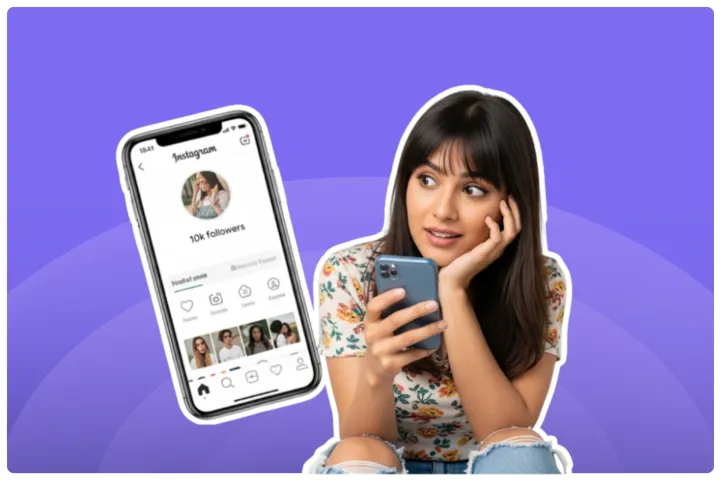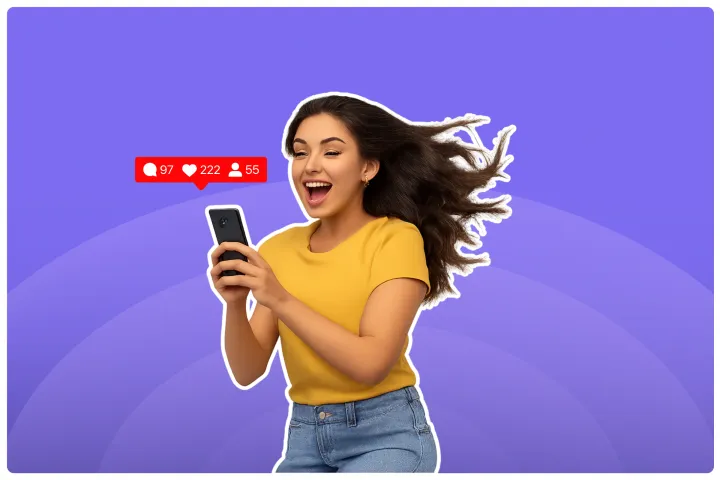Why You’re Losing Followers on Instagram in 2025: 15 Reasons
Losing followers on Instagram can be tough. Find out how to win them back with our easy-to-follow tips and tricks for a thriving profile!
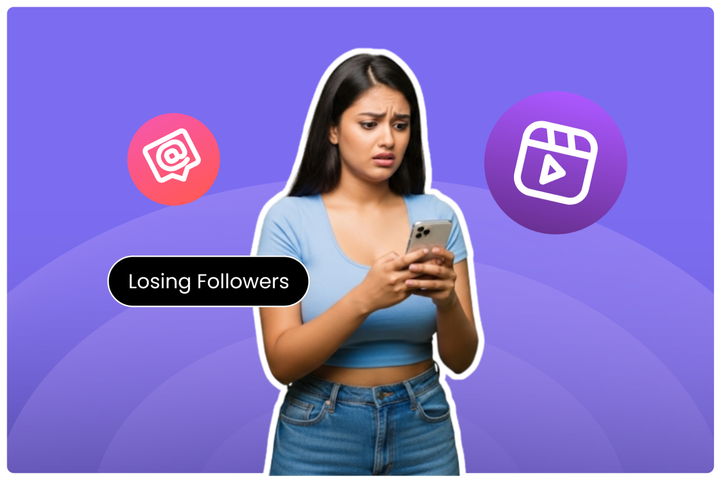
Your follower count isn’t just a vanity metric; it’s a measure of your growth, your reach, and your connection with your audience. It’s the key to landing bigger brand deals and building a thriving online presence. So, when you start losing followers on Instagram, it’s easy to feel frustrated and ask, "Why is this happening to me for no reason?!"
Don’t panic! In this article, we’re going to be your friendly guide. We’ll dive deep into the real reasons you might be losing followers (spoiler: there’s usually a reason!) and give you a concrete, step-by-step plan to turn the tide, stop the drop, and build a more loyal, engaged community.
Why Am I Losing Followers on Instagram? 15 Common Reasons
So, why are people hitting that unfollow button? It’s rarely for "no reason." Usually, it boils down to a mismatch between their expectations and your content. Let's break down the 15 most common culprits:
1) Inconsistent Content Quality
Blurry photos and shaky, poorly edited videos just don't cut it anymore. Your followers expect high-quality, visually appealing content. If your quality slips, so will their interest.
2) Irrelevant or Repetitive Content
Your followers hit 'follow' for a reason. If you're a food blogger who suddenly starts posting exclusively about crypto, you'll confuse your audience. Similarly, posting the same type of Reel every single day can lead to content fatigue.
3) Overly Promotional Content
Your feed is not a billboard. While sponsored posts are part of the influencer game, a constant barrage of ads without genuine, value-driven content can make your audience feel used. Balance is key. A good strategy is to mix promotional content with valuable user-generated content.
4) Controversial Content
Posting about sensitive or divisive topics is a surefire way to alienate a portion of your audience. Unless the topic is core to your brand's identity, treading into controversial waters can lead to a mass exodus of followers.
5) Inconsistent Posting
Going live every day for a week and then disappearing for a month is confusing for your followers and the algorithm. An erratic schedule disrupts audience expectations and can lead to unfollows from people who think your account has gone dormant.
6) Not Posting Enough
Out of sight, out of mind. If you aren't posting regularly, your account can appear inactive. Followers who crave fresh content will eventually look elsewhere, causing a steady decline in your numbers.
7) Overposting or Posting Too Frequently
On the flip side, nobody likes a spammer. Flooding your followers' feeds with multiple posts a day can be overwhelming and annoying, prompting them to unfollow to clear their feed.
8) Lack of Engagement with Your Audience
Social media is a two-way street. If you ignore comments, DMs, and tags, your followers will feel unseen and unappreciated. Taking the time to interact shows you value your community, which fosters loyalty.
9) Lack of Follower Engagement
If your posts are met with crickets (low likes, comments, shares), the Instagram algorithm takes note. It will show your content to fewer people, reducing your visibility and making it harder to retain the followers you have.
10) Buying Followers
This is a cardinal sin of Instagram. Buying followers gives you a list of bots and inactive accounts. These fake followers don't engage, which kills your engagement rate. Instagram also regularly purges these accounts, leading to sudden, sharp drops in your follower count. It's far better to learn how to get your first 1000 followers organically.
11) Inactive Follower Cleanup
Speaking of purges, Instagram periodically removes inactive and bot accounts platform-wide. While this can cause your follower count to dip, it's actually a good thing! It means your audience is becoming more authentic and engaged.
12) Unfollowing Sprees
Some users employ the shady "follow-unfollow" tactic. They follow you hoping for a follow back, only to unfollow a few days later. This is a common reason for fluctuations and a frustrating part of losing followers on Instagram cycle.
13) Declining Instagram Niche
Trends come and go. If the niche you operate in is losing popularity, your potential audience pool shrinks. This can lead to a natural decline in followers. It might be time to pivot or refresh your content within one of the fastest-growing Instagram niches.
14) Ineffective or Irrelevant Hashtag Strategy
Using banned or irrelevant hashtags can attract the wrong audience or limit your reach. A person looking for #GymMotivation might not be interested in your fashion content and will unfollow quickly. A solid hashtag strategy is crucial for discovery.
15) Shadowban
Though not officially confirmed by Instagram, a "shadowban" refers to a hidden restriction on your account's reach. If you've violated community guidelines, your posts may not appear on the Explore page or hashtag feeds, leading to a drop in engagement and followers.
Is It Normal to Lose Followers on Instagram?
Yes, it is completely normal to lose followers from time to time. Your follower count will always fluctuate. Think of it as a natural cycle. However, if you notice a consistent, chronic loss over several weeks or months, it’s a sign that you need to investigate and adjust your strategy. A few lost followers on Instagram is business as usual; a steady decline is a red flag.
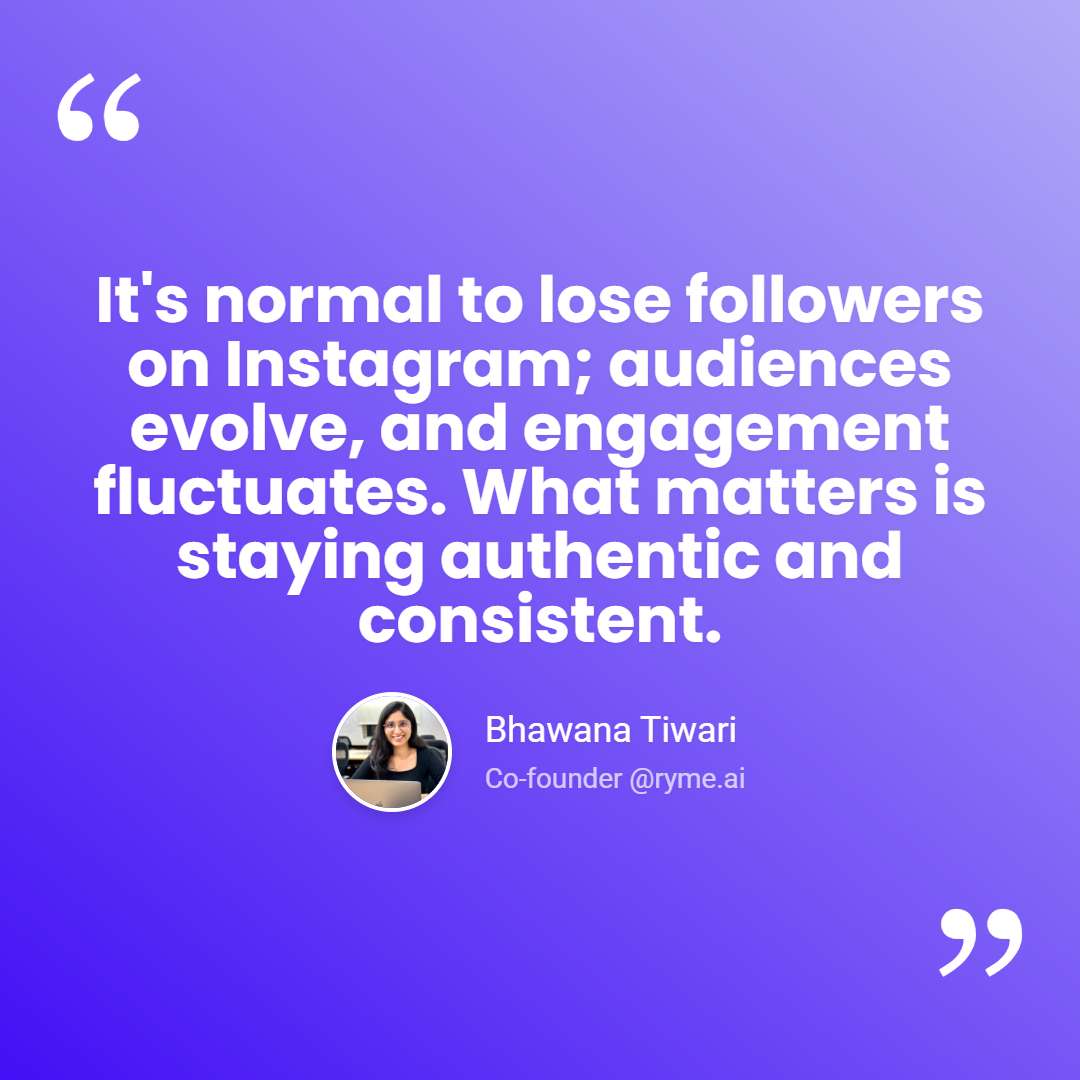
Is There a Reason Behind Losing Followers That You Don’t Control?
Sometimes, the follower drop has nothing to do with your content or strategy. Here are a couple of reasons that are out of your hands.
Reason #1: The Algorithm and Instagram Updates
Instagram’s algorithm is constantly evolving. In 2025, Meta has shifted towards an AI-driven ranking system that dramatically changes who sees your content. It now heavily prioritizes original content and penalizes accounts that just repost others' work. If you're wondering, "why am I losing followers on Instagram today?", a recent algorithm tweak could be the culprit.
Recent 2025 updates show Instagram is trying to give smaller creators a better chance by testing their content with non-followers. However, according to a Stack Influence report, overall organic reach has slumped. The AI now cares more about how long users watch your content (especially Reels) and whether they share or save it, rather than just simple likes.
Reason #2: Instagram Deactivation and Account Changes
Can you lose followers on Instagram when you deactivate? Yes. When a user deactivates their account, they are removed from your follower list. The same happens when Instagram conducts a "purge," removing bot accounts and inactive profiles to clean up the platform. While this drop might feel alarming, it actually improves your engagement rate by leaving you with a more authentic audience.
Reason #3: Celebrity Accounts Losing Followers
Even the giants stumble. High-profile celebrities like Selena Gomez, Kim Kardashian, and Beyoncé lose thousands of followers during these purges. Why is Selena Gomez losing followers on Instagram? It's often not about her content but about Instagram cleaning out fake accounts that were following her. This shows that no one is immune to these platform-wide adjustments.
How to Stop Losing Followers on Instagram
Okay, enough with the why—let's get to the how! You can stop the bleed and get back to growing. Here’s a step-by-step guide to maintaining your followers and keeping them engaged.
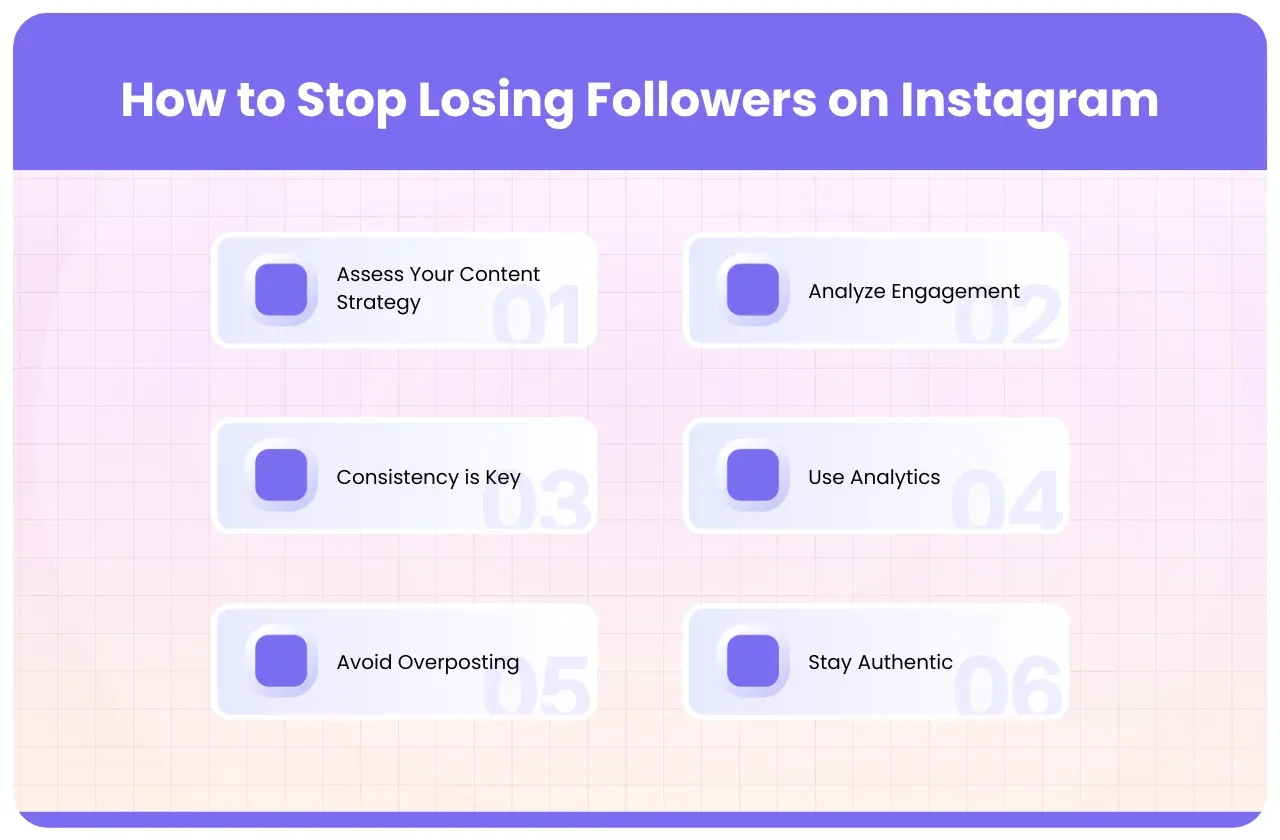
Step 1: Assess Your Content Strategy
Take an honest look at your last 10-15 posts. Is the quality high? Is the messaging clear? Are you offering value (entertainment, education, inspiration)? Re-evaluate what’s working and what’s not. Maybe it's time to explore user-generated content to add authenticity.
Step 2: Analyze Engagement
Don’t just post and ghost! Engagement is a two-way street. Respond to comments and DMs promptly. Use interactive stickers in your Stories (polls, quizzes, Q&As). When your followers feel seen and heard, they build a loyal connection with your brand. This is crucial for improving the impact of influencer marketing on consumer behaviour.
Step 3: Consistency is Key
Find a posting schedule that you can realistically stick to. It’s better to post three high-quality Reels a week than seven mediocre ones. Consistency helps your audience know when to expect content from you and keeps you top-of-mind. You can even schedule your Instagram Stories to maintain a steady presence.
Step 4: Use Analytics
Instagram Insights is your best friend. Dive into your analytics to see which posts get the most shares, saves, and comments. Pay attention to your audience demographics and when they’re most active. This data is gold. According to a 2024 Socialinsider report, the average engagement rate is around 0.50%, with carousels being the most engaging format. Use this as a benchmark!
Step 5: Avoid Overposting
More is not always better. Flooding your followers’ feeds is a quick way to get unfollowed. Focus on quality over quantity. If you have a lot to share, use carousels or Stories instead of multiple individual posts. Learning how to make your Instagram account attractive is about curation, not clutter.
Step 6: Stay Authentic
In a sea of curated perfection, authenticity stands out. Share behind-the-scenes moments, be honest about your journey, and let your personality shine. Trust is the foundation of a strong community. People follow people, not just brands. Building this trust is key, whether you're aiming for 10k followers or one million.
What Others Are Saying About Losing Followers on Reddit
You are not alone in this struggle. A quick search for "losing followers on Instagram 2024 Reddit" reveals countless threads filled with frustrated creators.
- One user on r/Instagram shared, "I used to have 3.4K followers until about April/May, since then I’ve been losing followers consistently. It’s even going so fast that last week I had a day in which I lost 15 followers when I didn’t post anything weird/controversial. What the actual f*ck is going on? And I lost 5 overnight today! THIS NEVER HAPPENED BEFORE!! Can they just stop this nonsense? Lots of people said they are deleting bots but it’s never been so much in a very short timeframe. How hard are they going? And will it stop?"
- Another commented on a thread about posting, "I think it's because many of those accounts are probably ghost/bot accounts. Why I say ghost accounts is because a lot of people abandoned using IG, so they're accounts are just sitting there, and IG might be cleaning them up. And then bot accounts are self-explanatory."
These stories highlight common pain points: dependency on ads, the sting of post-performance, and the general confusion surrounding the platform. The consensus is that focusing on organic, community-driven growth and high-value content is the only sustainable long-term solution.
Can You Track Which Followers You Lost?
So, can you see what followers you lost on Instagram? Natively, Instagram doesn’t make this easy. It won't send you a notification when someone unfollows you. To get this information, you'll need to use a third-party app. However, be extremely cautious, as many of these apps violate Instagram's terms of service and can compromise your account's security. A safer, albeit manual, method is to periodically check your follower list if you suspect someone specific has unfollowed you.
How to Reset Your Instagram Account Without Losing Followers
If you feel your account has gone stale, you might want a refresh. You can "reset" your Instagram account's look and feel without starting from scratch. Archive old posts that no longer fit your brand, introduce a new colour palette, update your bio to reflect your current mission, and create a new content strategy. Announce the "new look" to your followers to build excitement and bring them along on your journey.
Here’s a detailed video on it:
The Impact of Instagram Followers on Influencers
Let’s be real: for influencers, followers are currency. A healthy, growing follower count is directly tied to your earning potential. Brands look at this number to gauge your reach and influence. Losing followers on Instagram can directly impact the amount of money you can earn in India, with rates for a post often scaling with your audience size, from what you can make with 10k followers to the income from 100k followers. It affects your ability to land paid partnerships and secure lucrative collaborations.
Conclusion
That dreaded feeling of losing followers on Instagram is a shared experience among creators, but it doesn't have to be a constant source of stress. By understanding the algorithm, focusing on high-quality, authentic content, and engaging with your community, you can build a resilient and loyal following. Don't get bogged down by daily fluctuations. Instead, focus on the long-term trends and the actionable steps outlined above.
Stop wondering "why am I losing followers on Instagram for no reason" and start taking control of your growth. Your community is out there waiting for you.
FAQ Section
1) Why am I losing followers on Instagram today?
This could be due to a number of factors, including a small algorithm change, Instagram removing bot/inactive accounts, or users naturally curating their feed. Look at your content and recent activity for clues.
2) How can I stop losing followers on Instagram?
Focus on a consistent strategy: post high-quality, original content, engage genuinely with your audience, use Instagram's features like Reels and Stories, and analyze your Insights to see what works.
3) Is it normal to lose followers on Instagram?
Yes, it's completely normal for your follower count to fluctuate. A steady, sharp decline, however, is a sign you need to reassess your strategy.
4) Can I lose followers if I deactivate my Instagram account?
Yes, when a user deactivates their account, they are temporarily removed from follower lists. Instagram also regularly purges inactive and fake accounts, which can cause a drop.
5) How do I see who unfollowed me on Instagram?
Instagram doesn't provide this feature. You would need to use a third-party application, but use them with extreme caution as they can pose a security risk to your account.
6) Why do celebrities lose followers on Instagram?
Celebrities lose followers for the same reasons as everyone else, but on a much larger scale. The primary reason is often Instagram's platform-wide purges of millions of bot and spam accounts.
7) Why is my follower count fluctuating even if I post regularly?
Fluctuations are a natural part of the Instagram ecosystem. People's interests change, they clean their feeds, or your content may not resonate with everyone. Focus on your overall growth trend rather than small daily changes.
8) Why am I losing followers when I post high-quality content?
This can be incredibly frustrating. It could be that your posting frequency is too high, you're posting at a time when your audience isn't active, or there's a mismatch between what your audience expects and what you're delivering, even if the quality is high. It's also possible you are gaining new followers from the post, but simultaneously losing old, inactive ones, resulting in a net loss.
